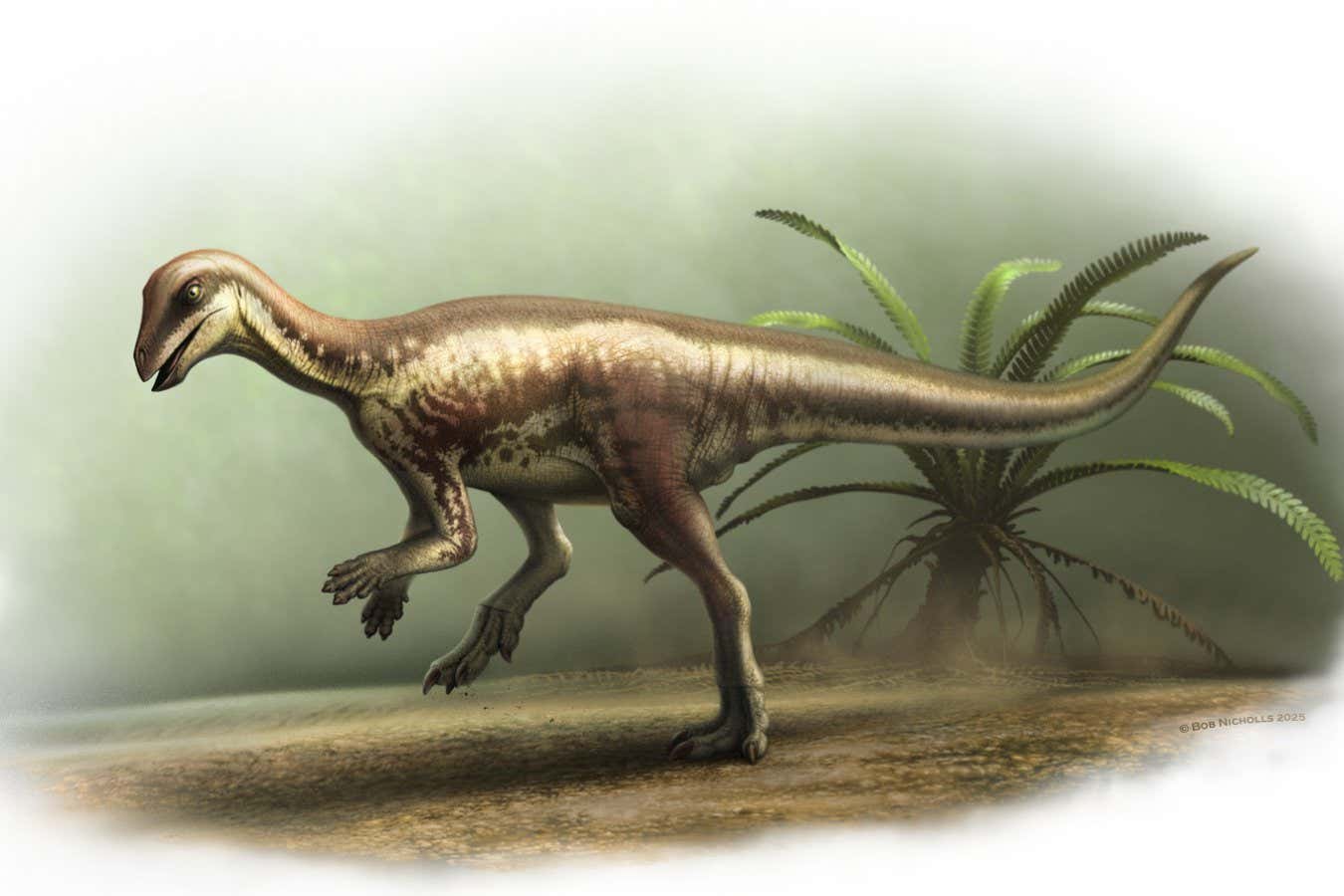Enigmacursordarted around North America in the Late Jurassic 145-150 million years ago and its skeleton now be on display in London’s Natural History Museum
Illustration ofEnigmacursor mollyborthwickae, a newly recognised dinosaur species© The Trustees of the Natural History Museum, London
Illustration ofEnigmacursor mollyborthwickae, a newly recognised dinosaur species
© The Trustees of the Natural History Museum, London
A newly discovered species of dinosaur is going on display in London’sNatural History Museum.
Enigmacursor mollyborthwickaewas a speedy, two-legged herbivore, 64 centimetres tall and 180 cm long that lived about 145 million to 150 million years ago, during the Late Jurassic Period.
Read moreLargest ever animal may have been Triassic ichthyosaur super-predator
Largest ever animal may have been Triassic ichthyosaur super-predator
Its reconstructed skeleton will be on display in the museum’s Earth Hall from 26 June, alongside its contemporary,Sophie the Stegosaurus.
Susannah MaidmentandPaul Barrett, both palaeontologists at the Natural History Museum, have analysed theEnigmacursorspecimen, which was uncovered from theMorrison Formationin the western US in 2021-22.
Back then, it was thought to be aNanosaurus– a poorly known species of small herbivorous dinosaur. TheEnigmacursorfossil isn’t complete, but using the few teeth – which reveal it ate plants – and portions of the neck, backbone, tail, pelvis, limbs and feet, Maidment and Barrett have defined this fossil as a new species, placed it in an evolutionary tree and reconstructed it for display.
Unmissable news about our planet delivered straight to your inbox every month.
They have based the structure of missing elements, like the skull, on similar small dinosaurs likeYandusaurusandHexinlusaurus. Generally, we know little about smaller dinosaurs, both because they are less likely to fossilise than bigger animals and because fossil hunters tend to seek larger, more valuable examples.
“This is a two-legged dinosaur and it’s got very small forearms that it probably would have used to grasp food to bring it to its mouth,” says Maidment. “And it’s got incredibly large feet and very long limbs. So, it was probably quite fast by dinosaur standards.”
TheEnigmacursorskeleton at the Natural History Museum in London© The Trustees of the Natural History Museum, London
TheEnigmacursorskeleton at the Natural History Museum in London
© The Trustees of the Natural History Museum, London
That is where the “cursor” part of its name comes from: it means “runner”. Maidment says it was probably charging around in the shadows of behemoths likeDiplodocusandStegosaurus.
The specimen’s vertebrae weren’t fused, which implies it wasn’t fully mature when it died. “I think this animal was probably a teenager, but it may well have been sexually mature, so it might not have got that much bigger,” says Maidment.
Read moreLast common ancestor of all life emerged far earlier than thought
Last common ancestor of all life emerged far earlier than thought
“Enigmacursorrepresents one of the rarities from further down the food chain of the dinosaur era,” saysDavid Normanat the University of Cambridge. “This newly described animal was clearly a small, wallaby-sized herbivore that scampered around the Late Jurassic countryside.”
The discovery sheds light on the early evolutionary stages of the herbivorous dinosaurs that would go on to dominate Cretaceous ecosystems in North America, says Maidment, and helps us build a more realistic ecological picture of the life and times of dinosaurs.
Journal reference:Royal Society Open ScienceDOI: 10.1098/rsos.242195
Royal Society Open ScienceDOI: 10.1098/rsos.242195
Related tourExpeditionDinosaur hunting in the Gobi desert: Mongolia – 1 place remaining16 August 202515 days
Receive a weekly dose of discovery in your inbox!
We'll also keep you up to date withNew Scientistevents and special offers.
